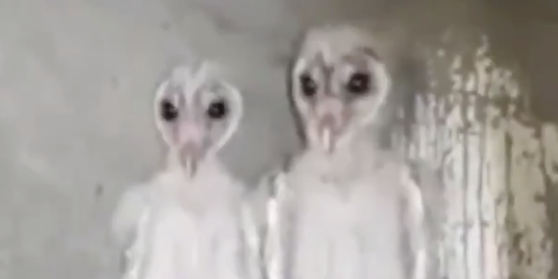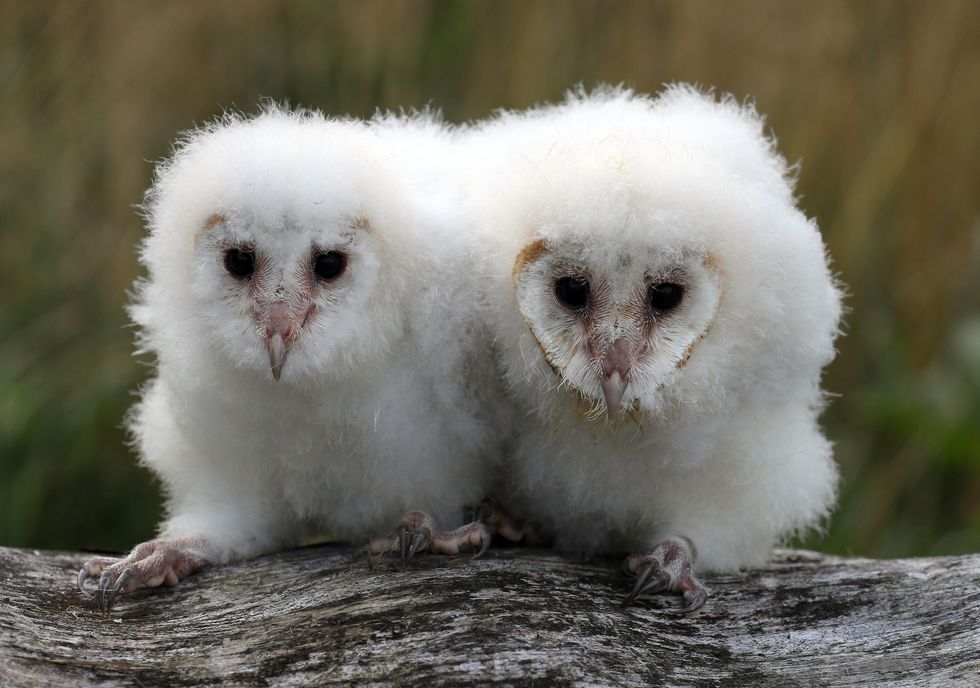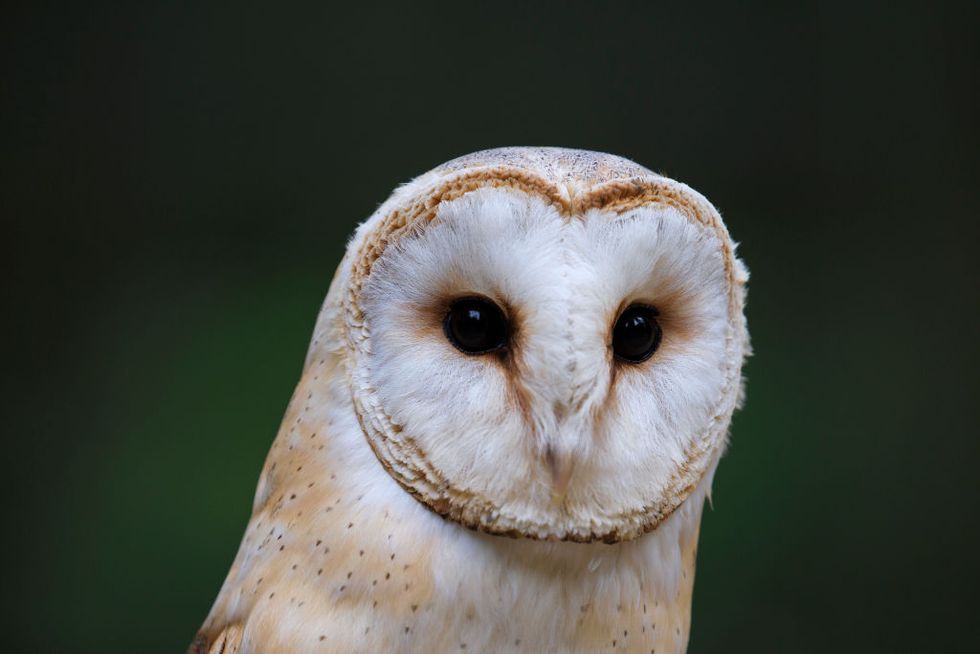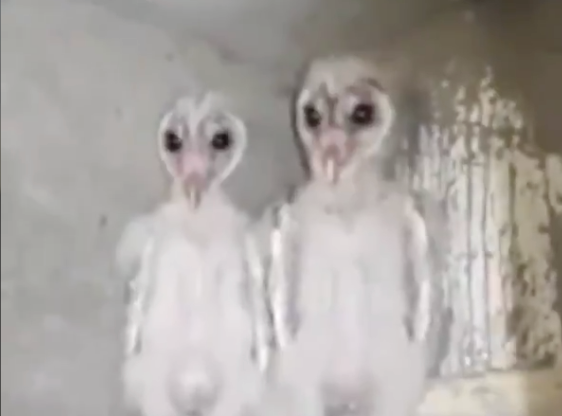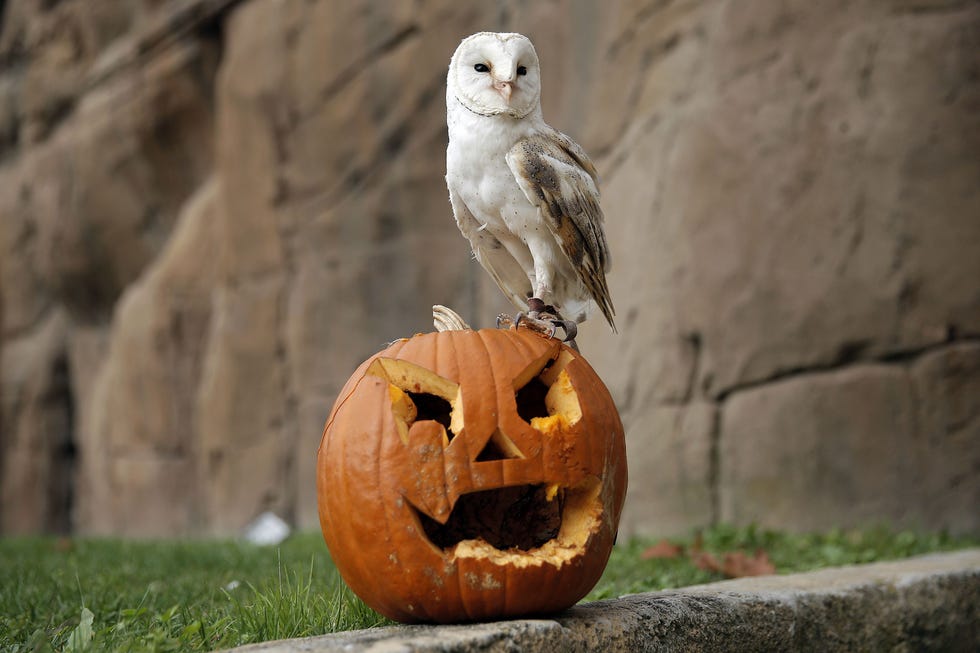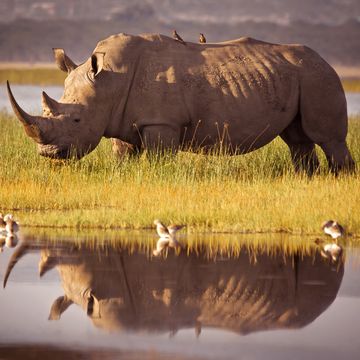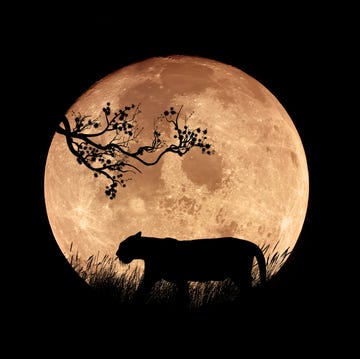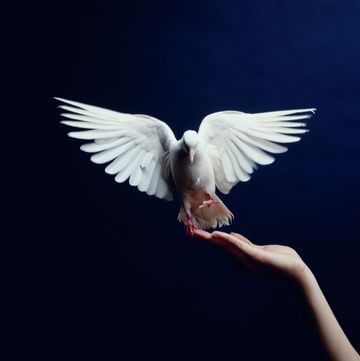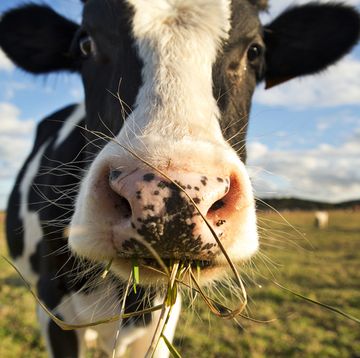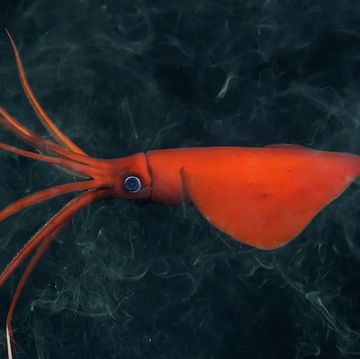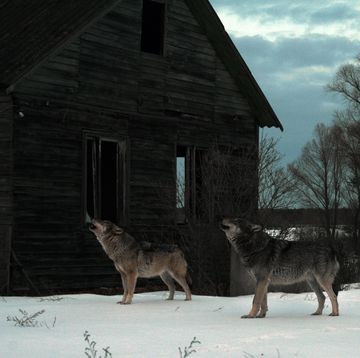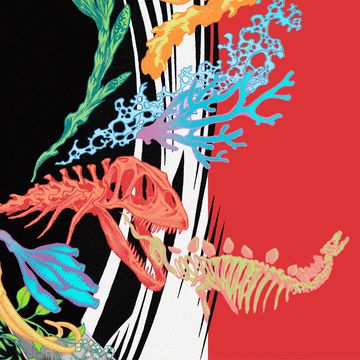- Contrary to what a viral Twitter video may have you believe, barn owls are not aliens. Or ghosts.
- The incredible birds have a series of spooky-looking adaptations that help them survive and thrive in the wild.
- Many researchers believe the silent-flying hunters, with their bright-white plumage, may be the inspiration for early ghost stories.
You’ve probably seen this viral video circulating on Twitter. The camera pans up through a hole in the ceiling to reveal ... creatures of some kind. Are they aliens? Ghosts?
No. They're owls. Really, really creepy owls.
If you’re not entirely convinced that the hissing trio are indeed birds, you’re not alone. (I showed the video to one friend, who replied: “That cannot possibly be real.” Others have displayed similar skepticism online.)
When the video first hit the internet in 2017, multiple sources reported that construction workers stumbled across the scraggly birds, known as eastern barn owls, at a site in Visakhapatnam, capital of the south-eastern Indian state of Andhra Pradesh. With renewed interest in the monster birds, Popular Mechanics reached out to ornithologist Kevin McGowan of the Cornell Lab of Ornithology to find out what makes them look so sinister.
“Baby barn owls are some of the freakiest-looking creatures on Earth,” McGowan says. “They start off looking kind of freaky and they stay that way until they get fully feathered.”
But what makes these particular owl chicks look so strange? Why do we have such a visceral reaction to them? And will we ever be able to sleep at night again?
First, Those Feathers!
McGowan suspects the barn owl chicks in the video were probably between two and three weeks old, so they don’t have the full-grown owl feathers we’re used to seeing.
“These baby barn owls, they have a lot of dense down [feathers] on them, which makes them look white,” McGowan says. They’re working on developing muscles and growing other parts of their bodies before they devote energy to forming the body, or contour feathers for which owls are known.
“There are basically two ways that birds grow up,” says McGowan. Some birds, like ducks and chicks, come out of the shell with fluffy down feathers. Most birds, he says, don’t have much in the way of the feathers when they crack open their shells. They may have a bit of the soft downy plumage, but they largely look like embryos and accumulate body feathers over time.
And once they do grow feathers, they molt.
That Face!
“Their faces are so freaky, too,” McGowan says. Most people would be right to assume that owls would have a round, spherical face, but they have a flat skull, which is compressed on the side. If you look closely at a barn owl’s face, you’ll notice it’s divided in half.
Barn owls have excellent hearing, and their entire face, McGowan says, is constructed not unlike a giant set of ears, built for funneling sound into their aural opening.
The owl’s eyes tell an incredible evolutionary tale, too. Most prey animals—think other sparrows, deer, and rabbits—have eyes on the side of their head so they can easily swing their neck around and spot whoever is hunting them. Predators, on the other hand—think jaguars, owls, and, yes, humans—have eyes on the front of their head.
“That really comes out with those freaky little youngsters,” says McGowan. “Their eyes just aren’t where you think they ought to be.” Owls swivel their necks because they can’t move their eyes inside their eye sockets.
That Posture!
Posture is key. The owls are standing there with their wings down to their sides, which makes them look a bit like humanoid creatures. “We’re not used to seeing birds in that way,” says McGowan. “They look exactly like the monsters that people create in science fiction.” If you’re picturing the aliens from Close Encounters of the Third Kind, Star Wars, or Star Trek, you’re not too far off. Many of them have human-like qualities.
McGowan says these particular birds look startled, so they’re likely backed away from the observer (understandable). “Owls do have very long legs,” he says. “They do look much more upright than I would expect. Most of the time, you can expect to find owls perched on a branch, sitting on their chest or hunched down on their feather-obscured legs.”
Those Creeps!
McGowan says there’s evidence to suggest our earliest ghost stories may have been inspired by the silent fliers. Barn owls, which have bright-white bellies, are notoriously good at soaring silently through the air, flapping their wings without a sound. Imagine seeing their beady eyes and wide stretch of white plumage flying out of a darkened barn or cemetery crypt.
“You can easily see why people thought that the places were haunted,” McGowan says.
The Takeaway
Barn owls are incredible creatures—they’re one of a handful of land-based birds that can be found on six of the seven continents. (Some races of barn owl, like those found in the northeastern part of the U.S., are endangered, according to Cornell Lab’s website.) They love to hide and nest in the rafters of barns and other abandoned buildings, typically hunt mice and other small rodents, and are known for their shrill screech—seriously, it’s terrifying.
But they aren’t aliens and they aren’t ghosts. Maybe they’re just like us: looking for love, rodents, and a beautiful, rustic barn to settle down in somewhere upstate.
Watch: This amazing octopus fit through the tiniest hole.
Jennifer Leman is a science journalist and senior features editor at Popular Mechanics, Runner's World, and Bicycling. A graduate of the Science Communication Program at UC Santa Cruz, her work has appeared in The Atlantic, Scientific American, Science News and Nature. Her favorite stories illuminate Earth's many wonders and hazards.
